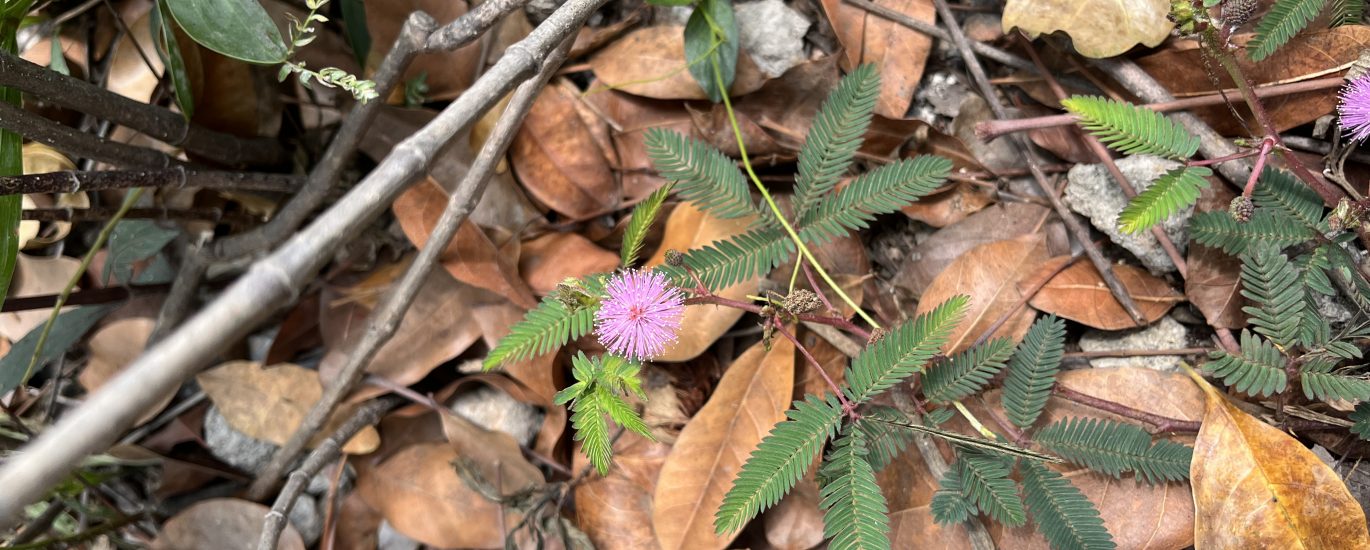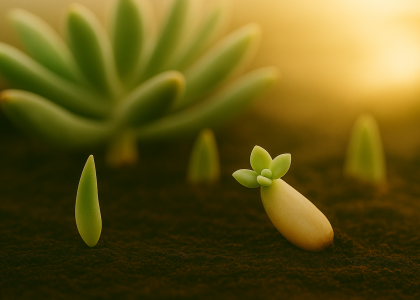Welcome, curious gardeners and plant enthusiasts! Imagine your home filled with intriguing greenery that interacts playfully at your touch, adding delight and charm to your everyday life. Today, let's explore the enchanting world of Mimosa pudica—the Sensitive Plant that brings joy, color, and a gentle touch of magic into your home.
Fascinating Appearance: The Playful Sensitive Plant
Mimosa pudica, known affectionately as the Sensitive Plant, features delicate fern-like leaves that instantly close when touched, delighting both children and adults alike. Its soft, feathery foliage and small, fluffy pink or lavender pom-pom flowers bring whimsical charm and subtle beauty to your indoor or outdoor garden.

Trending Charm: Why Mimosa Pudica is the Talk of the Town
Mimosa pudica, enchants gardeners worldwide with its interactive leaves that instantly close when touched. This playful "shyness" comes from specialized structures called pulvini at the base of its leaves, swiftly releasing water upon stimulation, causing the leaves to fold. This mesmerizing behavior, along with its delicate, fern-like foliage and whimsical fluffy pink blossoms, has turned this humble plant into an internet sensation.
The Principle of "Shyness": Stress Response in the Plant World
The closure of Mimosa pudica leaves is due to the special structure at the base of its petiole – the pulvinus. The pulvinus is filled with thin-walled cells, and the cell turgor pressure usually keeps the leaves stretched. When the leaves are stimulated by touch, vibration or light changes, the water in the cells will quickly flow to the intercellular space, causing the turgor pressure to drop and the leaves to droop and close. This reaction can not only reduce the damage caused by wind and rain, but also scare off herbivores through closing movements. It is a survival strategy that has evolved over a long period of time. Interestingly, the stimulation signal can be transmitted through electrical signals in the plant, and even if a leaf is touched, the entire leaf will close in sequence.
Getting to Know Mimosa Pudica
Originally native to Central and South America, this captivating plant thrives in warm climates and bright, indirect sunlight. Mimosa pudica is not only fascinating to watch, but it's also quite easy-going, adapting well indoors and out, making it ideal even for gardening beginners.
Key Features of Mimosa Pudica
Appearance: Feathery, fern-like leaves with delightful pink or lavender pom-pom blooms.
Growth Habit: Compact, reaching heights of 30-100cm, perfect for indoor pots or small gardens.
Seasonal Blooms: Produces attractive fluffy blooms in summer, adding color and charm to your home.


Ideal Conditions for Growing Mimosa Pudica
Ideal Conditions for Growing Mimosa Pudica
Sunlight: Bright, indirect sunlight (4-6 hours daily)
Soil: Well-draining, loamy soil rich in organic matter
Watering: Regular watering; keep soil consistently moist but never soggy
Easy Steps to Propagate Mimosa Pudica through Division
Choose Mature Plants: Select a healthy plant with multiple stems.
Gentle Handling: Carefully remove the plant from its container, gently separating roots and stems into smaller sections.
Potting with Care: Plant each section into pots filled with moist, nutrient-rich soil.
Consistent Care: Keep new plants in bright, indirect sunlight and maintain consistent moisture.
Protect Your Sensitive Plant: Pest Control Tips
Though Mimosa pudica is hardy, watch for common pests like aphids, spider mites, and mealybugs. Inspect regularly and use gentle insecticidal soap or neem oil treatments. Increasing humidity can also prevent pest outbreaks.

Watering Wisdom: Keep Your Mimosa Happy
Water daily, especially in warm weather; large pots may only need watering every 2-3 days.
Signs of thirst: Leaves become shriveled and won't reopen properly. Quickly revive by soaking pots for 20 minutes or adding water to the plant tray.
Ensure good drainage to prevent root rot.
Mimosa Pudica: The Perfect Plant for Mindfulness and Wellness
In today’s fast-paced, tech-driven world, gardening with Mimosa pudica provides an ideal way to unwind, reducing stress and fostering mindfulness. Its gentle, interactive nature makes it particularly beneficial for children and adults seeking therapeutic gardening experiences.
Creative Uses to Beautify Your Home
Interactive Home Decor: Ideal for bright windowsills, desks, or shelves, providing delightful entertainment.
Educational Children's Gardens: Stimulate curiosity and interaction, making learning fun and hands-on.
Peaceful Retreats: Place in meditation spaces or relaxation corners to enhance tranquility and mindfulness.

Embrace the Mimosa Pudica Lifestyle
Caring for a Mimosa pudica isn't merely gardening—it's engaging with nature’s magic daily. It offers a beautiful lesson in sensitivity, patience, and living harmoniously with nature.
Bring Mimosa pudica into your home today, and experience firsthand why it’s becoming everyone’s favorite trending plant!
Happy Gardening!





